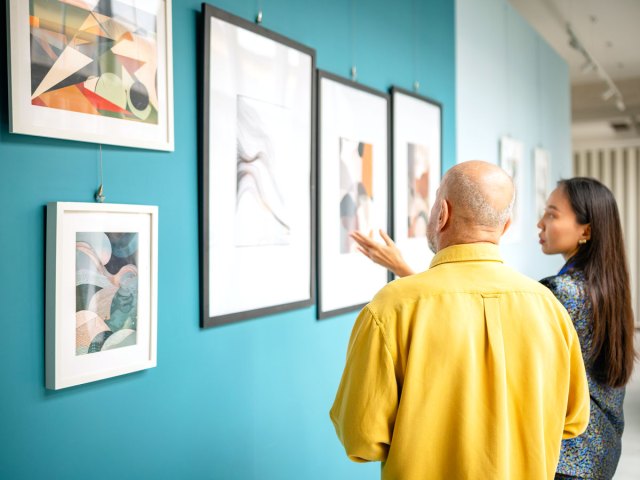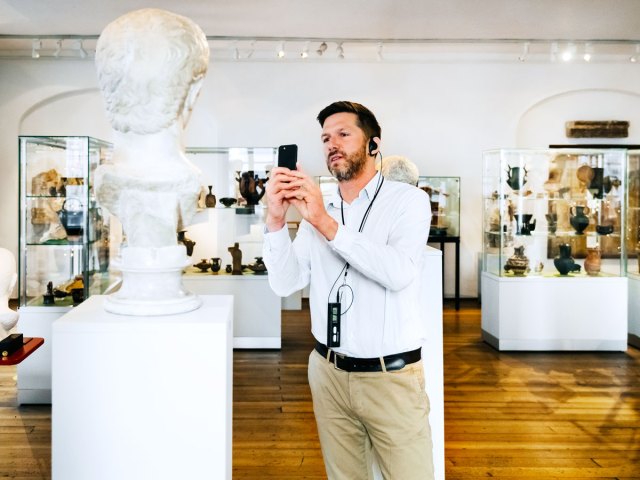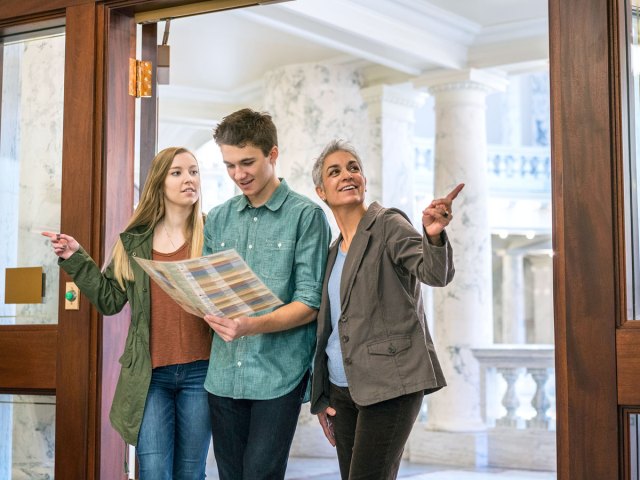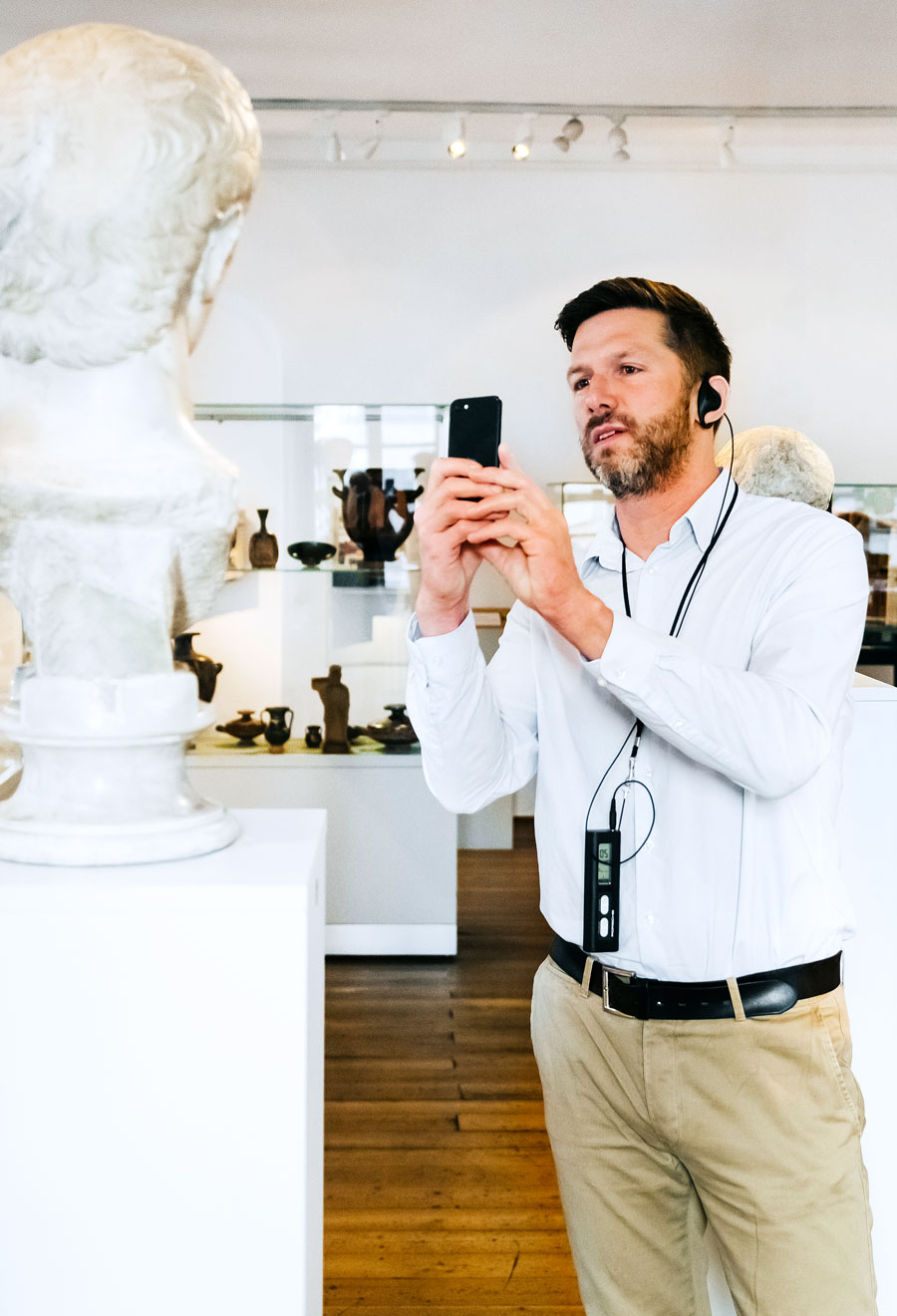Museums are some of the world’s most popular tourist attractions. In order to educate and inspire millions of visitors each year, it takes a team of thoughtful professionals working together to protect and display artifacts and artwork, making visitors’ experiences meaningful from the moment they walk through the front door. But even the best-curated museum can’t do its job if visitors aren’t also doing their part. Whether it’s ignoring signs, touching fragile objects, or rushing through an exhibit, guests often make any number of minor missteps that can undermine the experience. So, what do museum staff really wish you knew before your next visit? Here are six important museum tips you should keep in mind.
There’s One Simple Tip To Improve Your Experience

This is advice many visitors overlook, even though it can significantly enhance the experience: Take a moment to stop and read the placards. I’ve fallen victim to this museum faux pas myself. I remember walking into the Metropolitan Museum of Art for the first time and feeling overwhelmed by its enormity, which led me to skip many placards. As a result, I didn’t fully understand what I was looking at — I walked through a sea of statues without any real context, and it was entirely my fault.
But I’m not alone. As one staff member who works at a small museum explained on Reddit, “Everyone walks past the signs and texts that’ll give an overall introduction to what you’ll see coming in.” This staffer went on to say that guests often leave feeling confused and say there wasn’t much to see. A staff member at another museum also chimed in on Reddit, adding that while guests don’t have to read every panel, at the very least, reading the introductory panel can help orient them.
Touching Artifacts Is Worse Than You Think

“Do not touch” is one of the most important pieces of guidance in museums, according to staff. Museum artifacts are often fragile and can be severely damaged by environmental changes such as humidity, temperature, and light. Human touch does even more damage because oils and dirt from our hands can harm delicate surfaces. On the rare occasions when museum professionals handle these objects, they do so with care, using gloved hands.
The Ashmolean Museum in Oxford, England, set out to illustrate how harmful human touch can be by introducing a “touchometer” to track the number of individuals who touched an object made from various materials. After nearly 8 million touches, the part of the object that was touched showed severe damage compared to the protected section. The stone developed a patina, the metal became shiny, and the cloth wore away.
While 8 million touches might seem like a lot, consider that the Met in New York City sees more than 5 million visitors annually. With those numbers, it would take less than two years for an artifact to experience that same wear and tear if everyone were allowed to touch it.
In addition to artwork and artifacts, visitors should also avoid touching frames, platforms, labels, display cases, or other items used to protect the objects on display. Here’s a simple tip: Unless it is explicitly stated that touching is safe, assume it is not.
Photography Is a Tricky Topic

Typically, museum staff encourage visitors to take personal photos whenever allowed, but if there are restrictions, it’s for a good reason. For instance, flash photography is typically banned because it might damage artifacts and artwork. Some pigments break down faster when exposed to intense flashes or overhead lighting, which is why museum lighting is carefully controlled to minimize harm. For particularly delicate objects, protective glass cases are used.
Professional photography might also be restricted due to copyright reasons, especially when an exhibit is on loan from another institution. Other times, as one museum staff member pointed out on Reddit, restrictions arise out of respect. For example, Sanchita Balachandran, associate director and conservator at the Johns Hopkins Archaeological Museum in Baltimore, has expressed concern about patrons taking selfies with the museum’s famous Goucher mummy and has encouraged them to refrain from doing so out of respect. If you are ever unsure about whether you can photograph something, look for guidance on signs or ask a staff member for clarification.
Timing Is Everything

For a better museum experience, time your visit thoughtfully. You can usually expect larger crowds on weekends, so for a quieter visit, try going during off-peak hours, such as early mornings. For example, one guest asked a staff member at the Met about the best time to visit. They noted that the busiest time of day is typically from 11 a.m. to 1 p.m., when most tourists are out and about. The quietest times are in the early morning hours, right after opening, and during the evenings, about two hours before closing.
If you do visit later in the day, make sure to give yourself enough time to enjoy the museum before it closes so you don’t feel rushed. For instance, although the last entry to the British Museum in London is at 4:45 p.m., to fully appreciate the collection, you should expect to spend at least three to four hours there to see the highlights, such as the Rosetta Stone. Museum staff suggest following a three-hour “museum trail” to enjoy all the major galleries.
Please Show Respect to All Employees

Museums require extensive planning, and it takes a large team to keep the show running behind the scenes. Curators, archivists, researchers, tour guides, marketers, security guards, and many others work together to create a memorable and safe experience. This is why it’s so important to listen to and respect all museum employees, regardless of their title.
One common issue that many museum employees face is visitors ignoring guidelines, such as barriers, ropes, and no-entry signs. These measures are in place to optimize crowd flow and ensure safety, but museum staff often experience backlash when enforcing these rules.
For example, in a Reddit thread, a mechanic at an aviation museum recalled seeing guests walk straight into private maintenance facilities and duck under “do not enter” signs. They have also witnessed guests attempting to enter aircraft on display, vandalizing aircraft, and climbing on installations. Remember that ignoring the rules of staff can lead to the closure of exhibits and your removal from the museum.
Museum staff spend months, if not years, planning installations and exhibits. From the height at which paintings are hung to the placement of benches in front of particular statues, everything inside a museum is an intentional choice to enhance the guest experience, so it’s important to respect their hard work by following guidelines.
Pace Yourself

Lastly, remember that you don’t need to see everything in a museum. Some visitors try to see every exhibit in a short amount of time, which can lead to “museum fatigue.” A curator at the Richard and Carole Cocks Art Museum recommends slowing down and taking a break to prevent sensory overload.
Find a comfortable bench where you can sit and relax, taking in the surroundings. Above all else, museum staff want you to have an enjoyable visit, and this begins with setting realistic expectations about how much you can actually see. When in doubt, don’t hesitate to ask a museum staff member for guidance on which exhibits to check out.
More from our network
Daily Passport is part of Inbox Studio, which publishes content that uplifts, informs, and inspires.
















